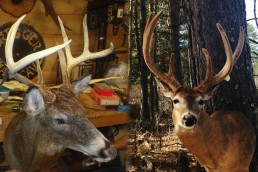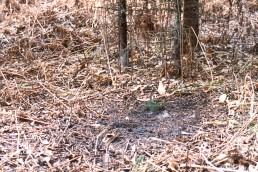Repairing Memories
SHARE THIS POST
When I look at the game mounts on walls throughout my home and office, I don’t consider them decorations. They are memories that allow me to relive the hunt. Each time I look at one I’m able to remember the specific details of that time afield. I know when and where it was killed, the weather, what the animal was doing that led up to the shot, the tracking job, who I was with, and more.
But accidents happen, and mounts can be damaged. Unfortunately, I have had my share of damaged ones throughout the years. Most of the time it happened during transit, and I even had a couple fall from the wall because of a lightning strike. Fortunately, though, taxidermists are artists and most damaged mounts can be repaired to look like new.
Hopefully, you won’t need a repair job, but things happen. Once the professional has returned the finished taxidermy back to you, it is in your hands to reduce the chances of it being compromised later on.
First, make sure the work is displayed in an area with little change in temperature and humidity. Also, keep the mount out of direct sunlight. Too many are damaged before they even make it to the trophy room. Before transporting, make certain you have a plan on getting your game home and into your trophy room without causing any damage. A white-tailed buck shoulder mount is often as simple as carrying it in, knowing where you want it, and then placing it securely on the wall. But for bigger shoulder mounts like elk or moose or for full-body mounts, you may have to remove doors and have dollies available to get the animal inside. Knowing what needs to be done before the mount arrives will lessen the chances of inflicting damage.
A good mount should last a lifetime, but there are a few things to be done. I’ve already mentioned the precautions to take as far as temperature, humidity and direct sunlight that could bleach the hide. You also need to look over each mount you bring in for signs of insect damage. One hide with bugs could easily cause an infestation that can spread from mount to mount, ruining them all.
It makes me sick to my stomach to see antlers of a big whitetail damaged by a stray bullet or by any other occurrence.
Are you enjoying this post?
You can be among the first to get the latest info on where to go, what to use and how to use it!
A few years ago, my sister shot a nice 10-point whitetail. The big buck was hanging in the garage behind the closed overhead door. During the evening, another member of our deer camp attempted to open the garage door from the outside. Forgetting the buck was hanging, the young hunter used a little extra force to raise the door when the first attempt failed. Hearing a loud thud as the buck slammed to the concrete floor, the hunter suddenly remembered there had been a buck hanging. Several inches of antler broke off of one side of the rack.
Again, taxidermists are good at their craft, and can often fix such mishaps. If possible, it is best for the hunter to take any pieces of the broken antler to the taxidermist. Where the damage to the mount occurred has a lot to do with how difficult it will be to repair. An old cape is going to be harder to repair than chipped paint on the tip of the nose. Capes that are falling apart can still be fixed. However, it will normally require a cleaning, new paint and finishing work. But if the workmanship was poor from the beginning there might be little one can do to salvage the mount. There are times when the cape can’t be saved and a new one has to be put on. But the cape rarely matters. Unless you tell, nobody will know it’s a replacement as they stare at the trophy antlers. Whitetail capes are easy to come by and will not cost lots of money. However, the harder it is to find size of cape you need, the more it will cost.
Like the repairs my sister had to have done on her big buck, antlers and horns can easily be repaired under most circumstances. But it depends on the severity of the damage. Resins are often used to fix them, but sometimes replications have to be casted to replace the damaged ones. The expense can be small for an easy repair to a very expensive one for a replica.
If the form of the mount has been compromised, it can be expensive and take time before it can actually be repaired. It could require a complete remount, including ear liners and eyes.
A professional taxidermist’s work is not cheap, and like most things in life, you get what you pay for. But an expert will do what he or she can to save what is from the original mount while trying their best to keep the cost down. For example, a complete remount will be the cost of an original mount, plus the price for a cape. This may be several hundred dollars. But a simple antler repair might be less than $100.
Hopefully you’ll never need a repair job on a prized mount, especially if you take measures to ensure its safety. But if you do need quality work done, it’s nice to know it’s readily available.
MWO
SHARE THIS POST
Did you enjoy this post?
You can be among the first to get the latest info on where to go, what to use and how to use it!
Jason Houser
Jason Houser is an avid outdoorsman from Central Illinois. Houser has been a full-time freelance writer since 2008. He is also the host of Jason Houser Outdoors, airing on the Hunt Channel. He can be found on Facebook at Jason Houser Outdoors or on the web at jasonhouseroutdoors.com.



